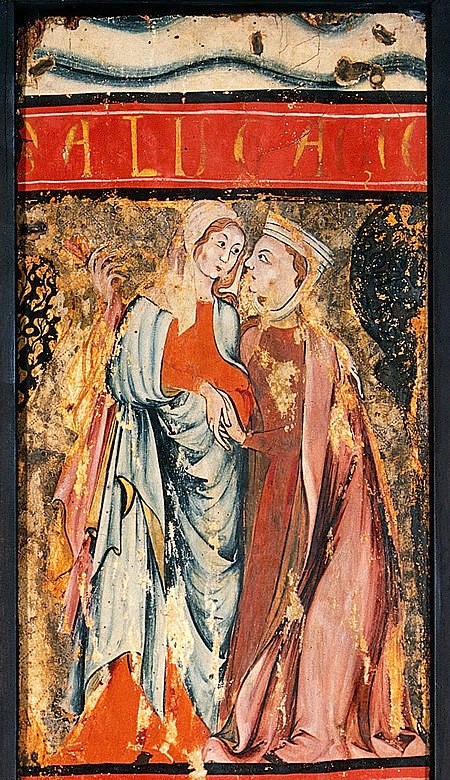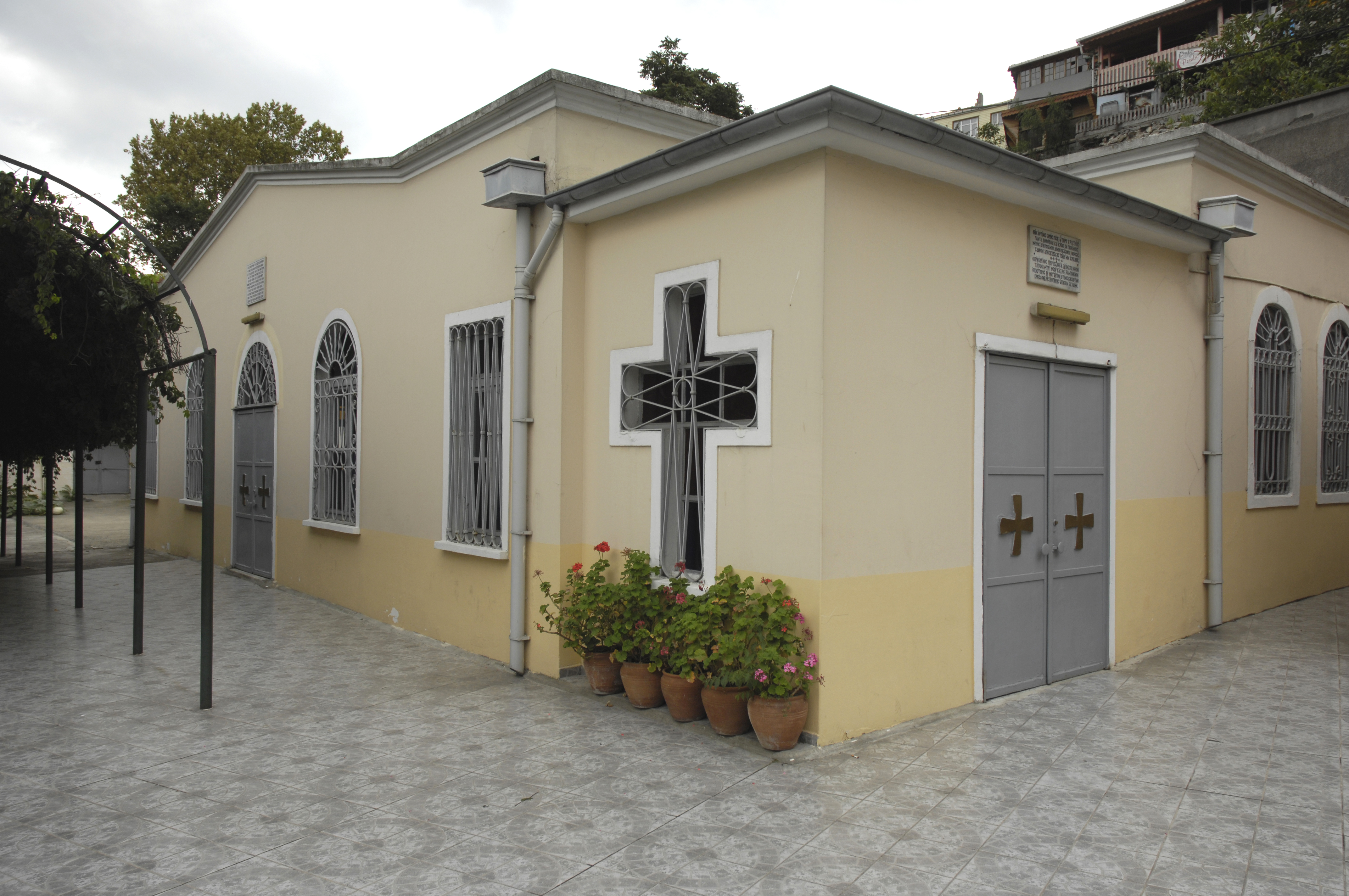The authors of the 1970 General Calendar suppressed a number of devotional feasts of the Blessed Virgin Mary “so that the people could give greater honor on those feasts of the Lord in which Mary has a particularly important role.” [1] The Visitation was one of the feasts that was spared, but it was also part of a shuffling of Marian holy days. The feast of the Immaculate Heart of Mary was moved from August 22 to the day after the solemnity of the Sacred Heart of Jesus, the Queenship of Mary was moved from May 31 to August 22, and the Visitation was moved from July 2 to May 31.
Friday, June 28, 2024
Revisiting the Date of the Visitation
Michael P. FoleyThe official reason for transferring the Visitation was to “achieve better accord with the Gospel narrative” (quo aptius consentiat narrationi evangelicae) by placing the feast somewhere between the Annunciation (March 24) and the Birth of John the Baptist (June 24). [2]
At first blush, the decision is perfectly understandable. In the Byzantine Rite, July 2 commemorates the Deposition of the Robe of the Most Holy Theotokos at the church of St. Mary of Blachernae in Constantinople in A.D. 479. For the Gospel reading, Luke’s account of the Visitation would be used. The Franciscans picked up this custom in 1263 and renamed it the Visitation of Mary. In 1389, Pope Urban VI placed the feast on the universal calendar in order to beseech the Blessed Virgin to end the Great Schism. July 2, then, seems unrelated to the Gospel chronology.
The current Church of St. Mary of Blachernae
But appearances can be deceiving. The liturgical reformers implicitly depict the Visitation as an episode that lasted from March 24 to June 24, a depiction at odds with both the Gospel that they claim to be tracking as well as the realities of childbirth.
Regarding the former, if John the Baptist was born on June 24, he would have been circumcised and named on July 1, in accordance with the Law. Saint Luke relays that the circumcision was the occasion of a family gathering—in other words, a party. Since the Blessed Virgin Mary’s only motive in visiting Elizabeth was to help her, it is highly unlikely that she would have left before the big circumcision party, leaving an aged, postpartum Elizabeth and her literally dumb husband Zechariah to fend for themselves. No, Mary’s generous heart would have anchored her to the home of Zechariah and Elizabeth until she was no longer needed, and the earliest possible date for that would have been July 2, the day after John’s circumcision--and the day after the dishes had been washed.
The realities of childbirth--which I suspect were not well known to the clerics who revised the calendar, since all of them were celibate and almost none of them had any pastoral experience--reinforce July 2 as the earliest likely departure date. For many women, the pangs of labor are the easy part. The first few days of motherhood can be mentally and physically exhausting, especially for a first-time mother and especially for a mother who is not in the springtime of her youth. Add to that the various difficulties that often accompany nursing for the first time, and you can have a new mom on the verge of a nervous breakdown. Again, I doubt that Holy Mary would have left her cousin under such circumstances.
Scenes from the Life of St. John the Baptist, by Francesco Granacci, ca. 1506-7
A third consideration is that Mary was most likely an eyewitness of the events of July 1 because according to tradition, she was a key resource for St. Luke, who is the only evangelist to record the Annunciation and Visitation.
The July 2 date thus enables the faithful to remember not only the joyful beginning of the Visitation but its entire arc, that three-month period when the Mother of God aided her cousin, witnessed the miracle of Zechariah’s recovery of his voice (on July 1), and returned home, pondering these things in her heart. (Lk. 2, 19)
May 31, on the other hand, has no real connection to the timeline of the Visitation. The liturgical reformers assert that it better accords with the Gospel because it occurs between March 24 and June 24, but so do 90 other days. The most likely reason that May 31 was chosen out of a total of 91 options is that the reformers had created a void on May 31 by transferring the Queenship of Mary from May 31 to August 22, and it may have struck them as odd to end Mary’s month of May without a Marian feast. Understandable, but those are prudential responses to the liturgical game of musical chairs that they themselves initiated; the Gospel narrative has nothing to do with it.
If one truly wanted the most Scripturally accurate date--and if one, for whatever reason, did not want the date of Mary’s departure from the home of Zechariah and Elizabeth--one would try to assign the feast to the date when Mary first arrived at their home and saluted Elizabeth. (Luke 1, 40) Mary lived in Nazareth and Elizabeth in Ein Karem, a village about five miles west of Jerusalem. As the crow flies, the distance between the two is approximately 64 miles, but because Jews, then as now, avoided the direct route through Samaria, Mary would have had to travel about 100 miles to reach her cousin. Mary “went with haste” to Ein Karem as soon as she learned that Elizabeth was with child (Luke 1, 39), but that does not mean that she set out immediately and by herself. The mountainous regions of Judea were notoriously rife with highway robbers, and it would therefore have been irresponsible of Mary, a fifteen-years-old girl and new Ark of the Covenant, to journey alone. It is more reasonable to conjecture that Mary joined a caravan, possibly accompanied by her betrothed, Saint Joseph. Supporting this conjecture is Luke’s wording: “And Mary rising up in those days, went into the hill country with haste…” (Lk. 1, 39, emphasis added) It may very well have taken Mary several days to find an available caravan.
Church of the Visitation, Ein Karem, Israel
Another variable is how fast the caravan moved. A Roman legion could march twenty miles a day, a donkey could typically cover twelve to fifteen miles a day, and Ezra averaged fourteen miles a day when he traveled from Babylon to Jerusalem (Ezra 7, 9). Because a caravan would presumably consist of young and old, fit and not-fit, a conservative estimate of twelve miles a day (maybe even less) seems the most reasonable, especially since the latter half of the journey involved a steep ascent into mountains.
On the other hand, because Jews could not travel far outside a walled city on the Sabbath, the caravan probably took shelter for at least one day during the journey.
The best-case scenario, then, is that Joseph and Mary found a caravan leaving that very day, although, as I have just argued, I highly doubt that they did. If the Annunciation occurred on March 25, if the young couple left Nazareth with a caravan the same day, if the caravan averaged twelves miles a day but stopped one day for the Sabbath, and if the journey between Nazareth and Ein Karem was 100 miles, then the very earliest date on which the voice of the Lord’s mother could enter Elizabeth’s ears would be April 1--although a later date, such as around mid-April, is in my opinion far more likely. Either way, May 31 is not even a remote contender.
And thus we are left with the question: which of the two dates, July 2 or May 31, “better accords with the gospel narrative”?
Notes
[1] Roman Calendar (United States Catholic Conference, 1976), 29
[2] Roman Calendar, 83; Calendarium Romanum (Vatican, 1969), 93, 128.




